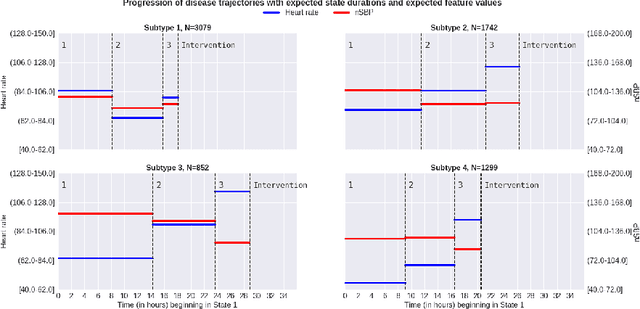Nikhil Galagali
Practical data monitoring in the internet-services domain
Mar 17, 2022



Abstract:Large-scale monitoring, anomaly detection, and root cause analysis of metrics are essential requirements of the internet-services industry. To address the need to continuously monitor millions of metrics, many anomaly detection approaches are being used on a daily basis by large internet-based companies. However, in spite of the significant progress made to accurately and efficiently detect anomalies in metrics, the sheer scale of the number of metrics has meant there are still a large number of false alarms that need to be investigated. This paper presents a framework for reliable large-scale anomaly detection. It is significantly more accurate than existing approaches and allows for easy interpretation of models, thus enabling practical data monitoring in the internet-services domain.
Patient Subtyping with Disease Progression and Irregular Observation Trajectories
Nov 01, 2018


Abstract:Patient subtyping based on temporal observations can lead to significantly nuanced subtyping that acknowledges the dynamic characteristics of diseases. Existing methods for subtyping trajectories treat the evolution of clinical observations as a homogeneous process or employ data available at regular intervals. In reality, diseases may have transient underlying states and a state-dependent observation pattern. In our paper, we present an approach to subtype irregular patient data while acknowledging the underlying progression of disease states. Our approach consists of two components: a probabilistic model to determine the likelihood of a patient's observation trajectory and a mixture model to measure similarity between asynchronous patient trajectories. We demonstrate our model by discovering subtypes of progression to hemodynamic instability (requiring cardiovascular intervention) in a patient cohort from a multi-institution ICU dataset. We find three primary patterns: two of which show classic signs of decompensation (rising heart rate with dropping blood pressure), with one of these showing a faster course of decompensation than the other. The third pattern has transient period of low heart rate and blood pressure. We also show that our model results in a 13% reduction in average cross-entropy error compared to a model with no state progression when forecasting vital signs.
 Add to Chrome
Add to Chrome Add to Firefox
Add to Firefox Add to Edge
Add to Edge